Flight of the Sole Man

Harley Lewin grew up in 1950s New York City and Long Island, where baseball was stitched into the fabric of his childhood. He liked the Dodgers, loved the Yankees and idolized New York’s collective roster of mid-century heroes: Jackie Robinson, Carl Furillo, Yogi Berra. His love for the sport is such that, even now—his well-trimmed beard long ago gone white—his eyes brighten as he extols the power of Aaron Judge, and his voice sours on the subject of how those “idiots,” the Dodgers, “knifed New York in its heart” by decamping west.
But Byron McLaughlin? No, that name Lewin didn’t know until, oh, 1989, by which point McLaughlin was a half-decade removed from a brief, forgettable career in the majors, where he’d pitched for the Mariners and the Angels. Lewin, by then, was already well into his career pioneering the field of U.S. trademark protection, his client base having grown from small-time rock-band merchandisers to a burgeoning California shoe company called Vans. In the late ’80s the sneaker industry was facing a crisis: Knockoff shoes—in international stores and at U.S. flea markets—were eating into bottom lines. To stamp out the impostors, companies such as Nike and Reebok needed someone to find the fraudulent sources and then litigate. Someone like Lewin.
Find more Sports Illustrated True Crime here.
Which is how a transient hurler would come to intrude upon this Manhattan lawyer’s life, telephoning tauntingly from the French Riviera in a yearslong game of cat and mouse. Decades later, Lewin never goes long without someone asking about his career’s defining case. “It’s like a bad penny falling from the sky,” he says. For a while it bothered him, the unrepentant con man slinking beyond his grasp. Now, Lewin says, “it’s reached the point of s---- and giggles.”
Then he says, as if the realization has dawned on him anew, “It’s such a bizarre story.”
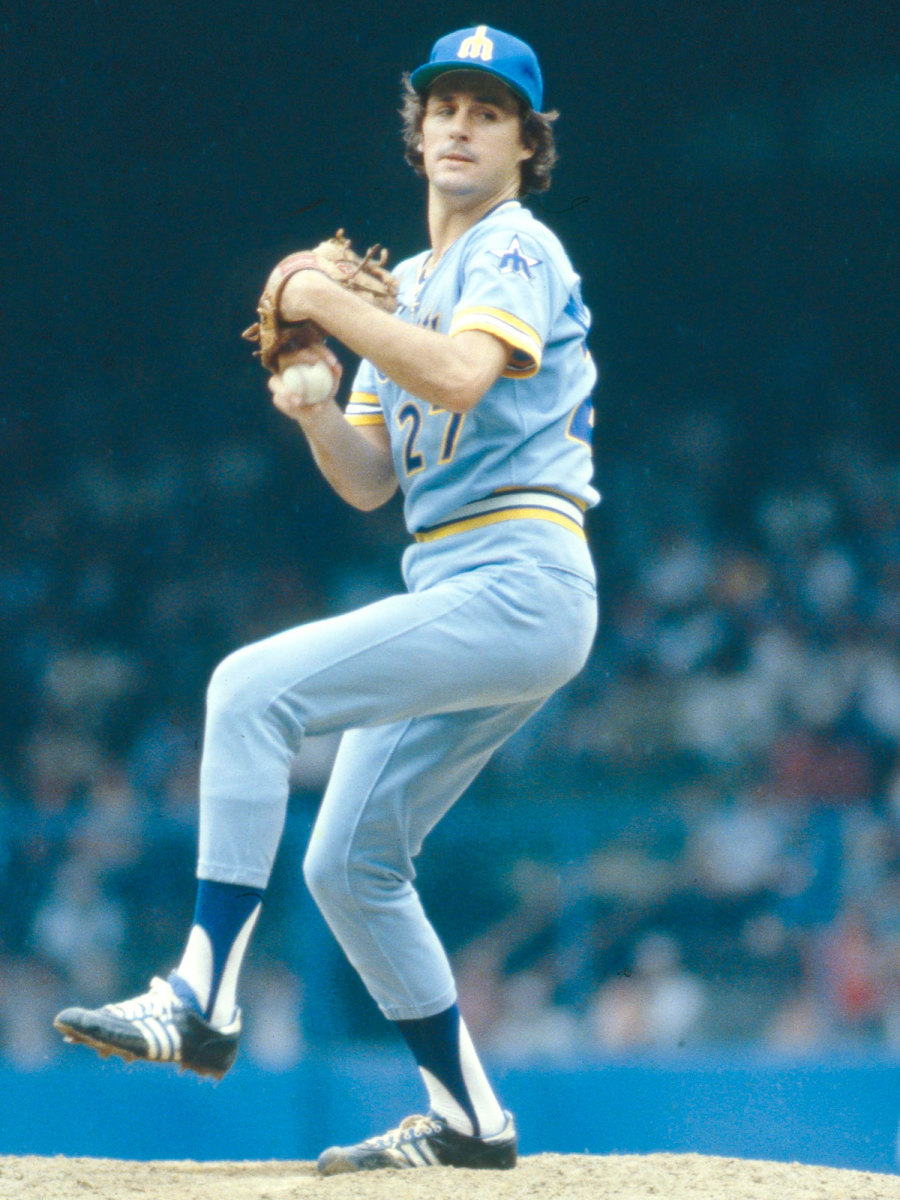
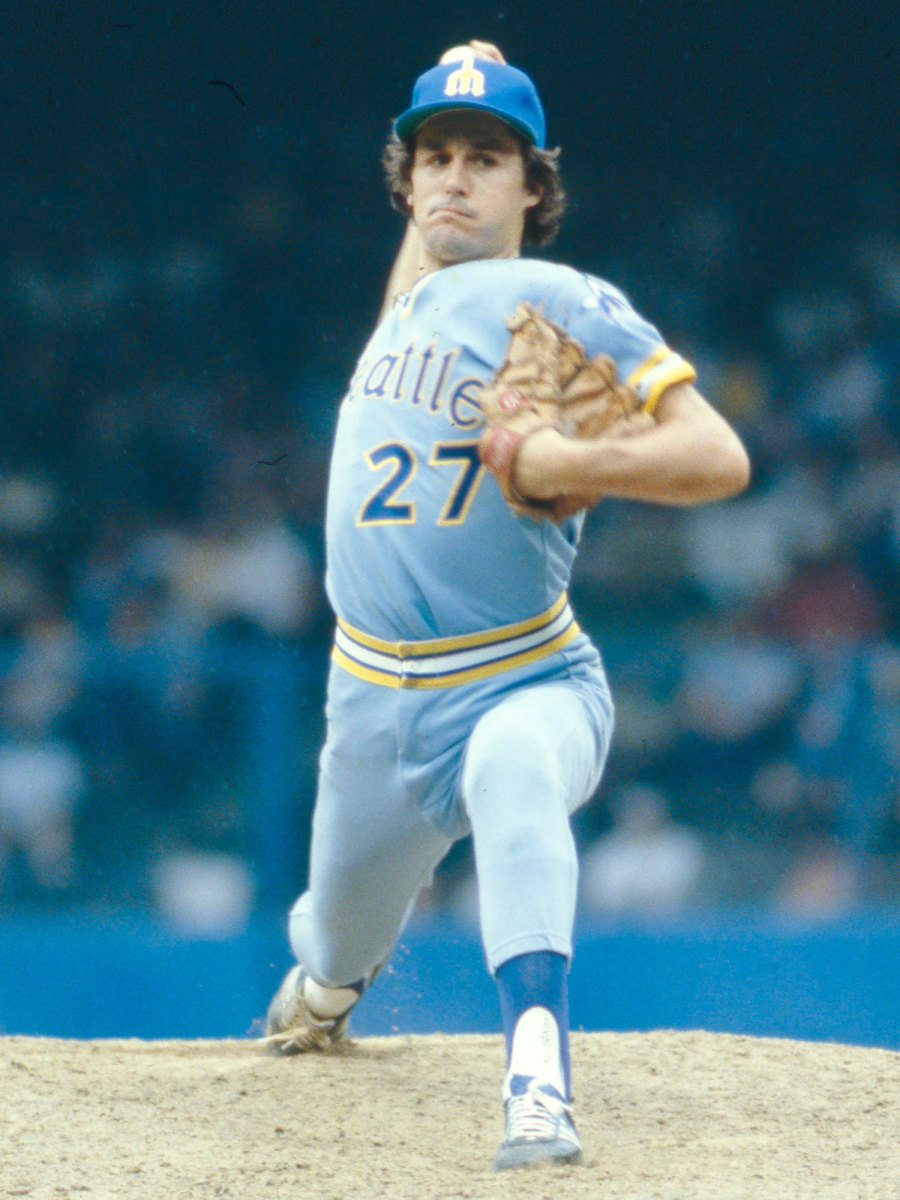
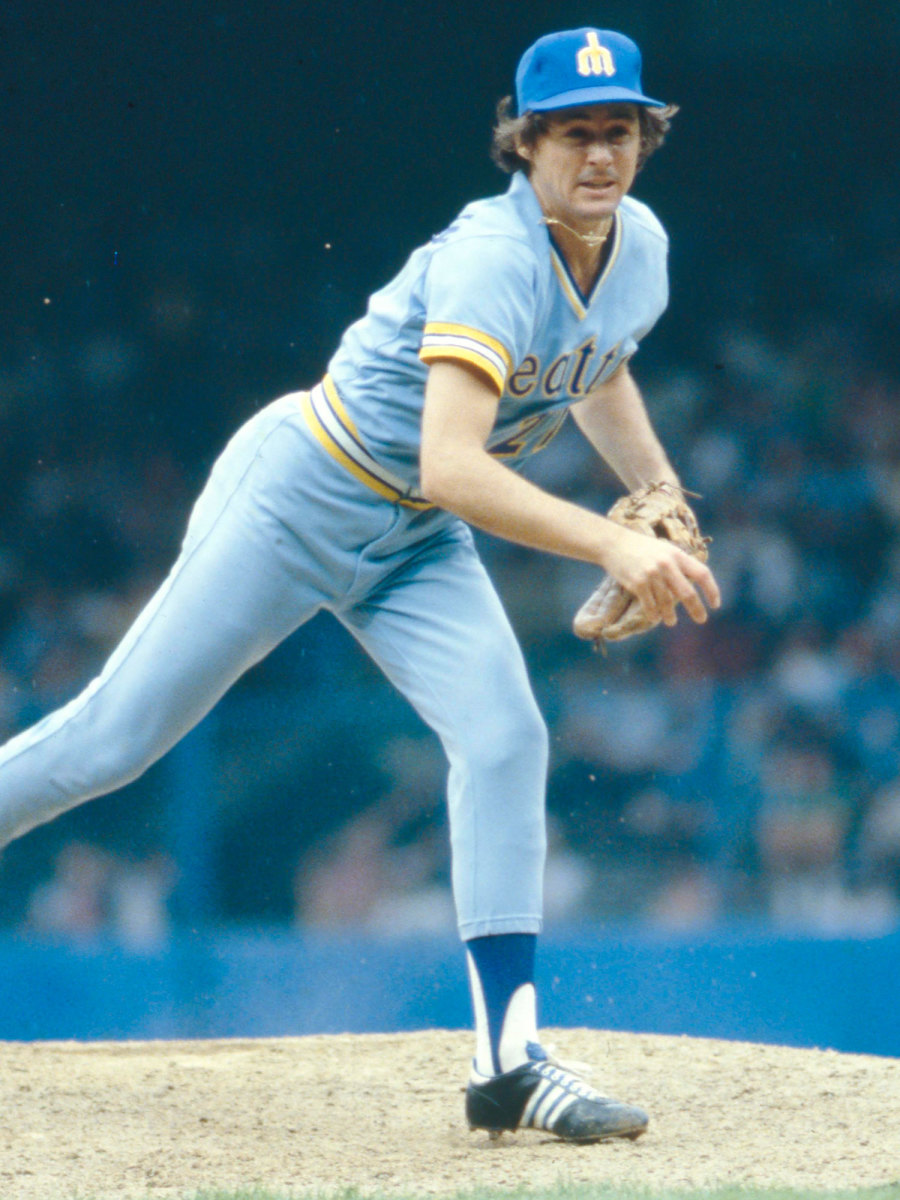
The Mariners were effectively birthed by lawyers. In 1970 the city of Seattle sued the American League after the expansion Pilots played just one season there before jetting to Milwaukee. As part of a settlement, reached in 1976, the Emerald City was granted a second chance, but the Mariners that debuted at the Kingdome in the spring of ’77 were something short of major league. None of their everyday players batted above .275; none of their starting pitchers had an ERA below 3.93. They lost 98 games. The operation was so shoestring that Seattle’s front office once warned its training staff it may need to pay its own way home from a series in Baltimore and file for reimbursement later. (Things ended up working out.)
It was a level of incompetence that clears an organization’s rungs. And onto them, confidently, stepped Byron McLaughlin, a hard-throwing, feather-coiffed righthander from Santa Monica. McLaughlin’s first few years in pro baseball had included a failed attempt to convert from outfielder to catcher in the Expos’ system in 1974; reincarnation as a middling minor league pitcher for the Orioles a year later; and one season with an unaffiliated team in Victoria, Texas, where he pitched well enough to be signed by the Mariners, who in turn dispatched him to the Mexican League’s Nuevo Laredo Tecolotes, based in a border town along the Rio Grande. That was McLaughlin’s first stint playing in the country that eventually would become like a second home.
In September 1977 the Mariners included the 21-year-old in their late-season call-ups, and for the next two years McLaughlin was in and out of Seattle’s rotation. There were flashes of promise (a two-run complete-game win on July 3, 1979) often followed by implosion (five runs in 2 and 2⁄3 innings five days later, sending him back to the pen). But given the team’s paucity of talent, management gladly let the young fastballer eat up innings.
Whether those same people were glad to be around McLaughlin was another story. “When you’re with a team, it’s kind of like a family,” says Jerry Narron, a teammate of McLaughlin’s with both Seattle and California. “Some family members go their own way a lot and don’t hang with the group. Byron was one of those guys.”
Other teammates say he developed a reputation as a blame-allergic finger-pointer. He drove coaches nuts trying to devise new pitches and training methods or complaining about nagging injuries. In 1979 he missed two weeks of action when he banged his hand on a hotel-room desk while rehearsing his pitching motion, and he incited the clearing of benches after two on-field incidents in Anaheim with a future teammate, the normally placid Angels star Rod Carew.
But the most bizarre incident came right after that series, when McLaughlin received permission to travel back to Mexico for his wedding and left a gym bag at the Mariners’ hotel for trainer Gary Nicholson to bring back to Seattle. When Nicholson put that luggage through the X‑ray at LAX, security stopped him: Inside was a .357 magnum. The trainer was searched and detained, missed the team flight . . . and then got an earful from McLaughlin for the ensuing bad press. The pitcher asked for the gun back but never apologized.
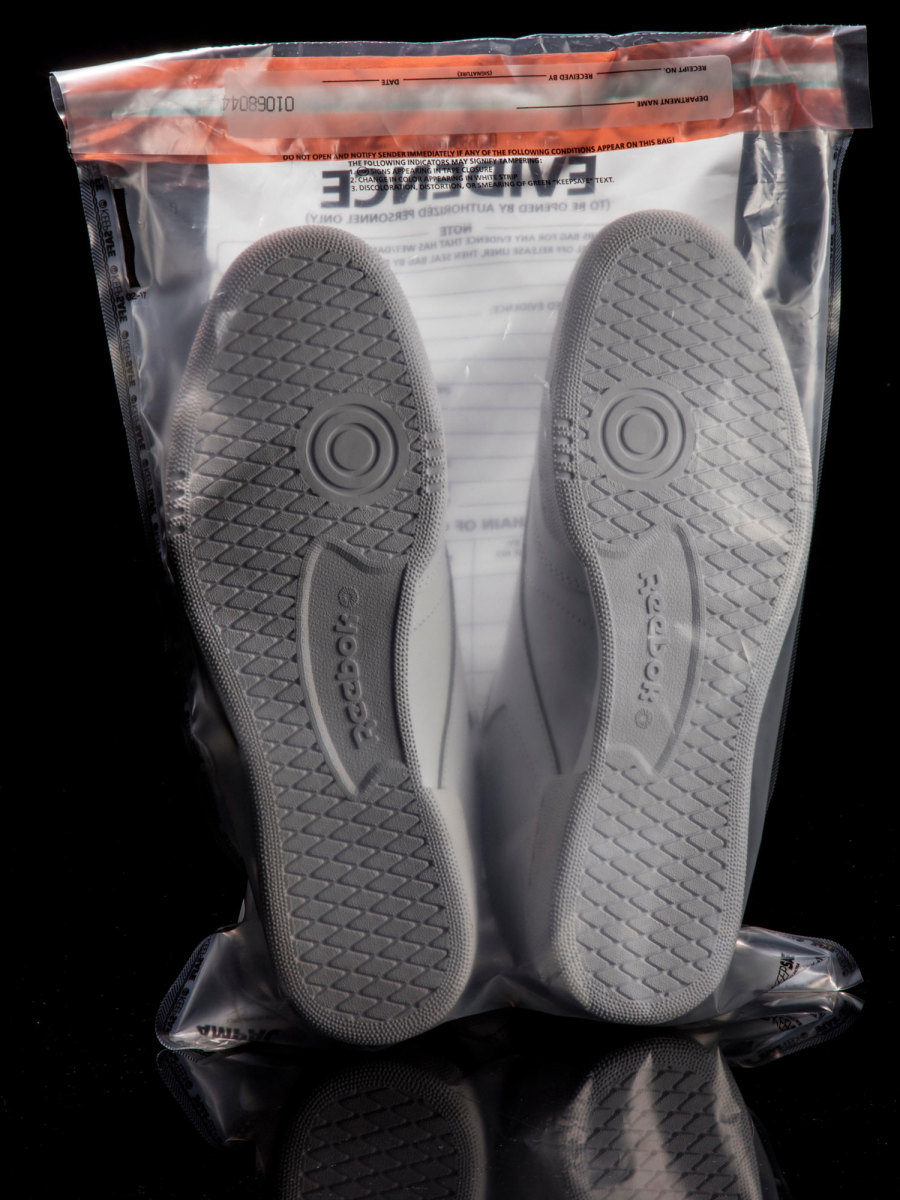
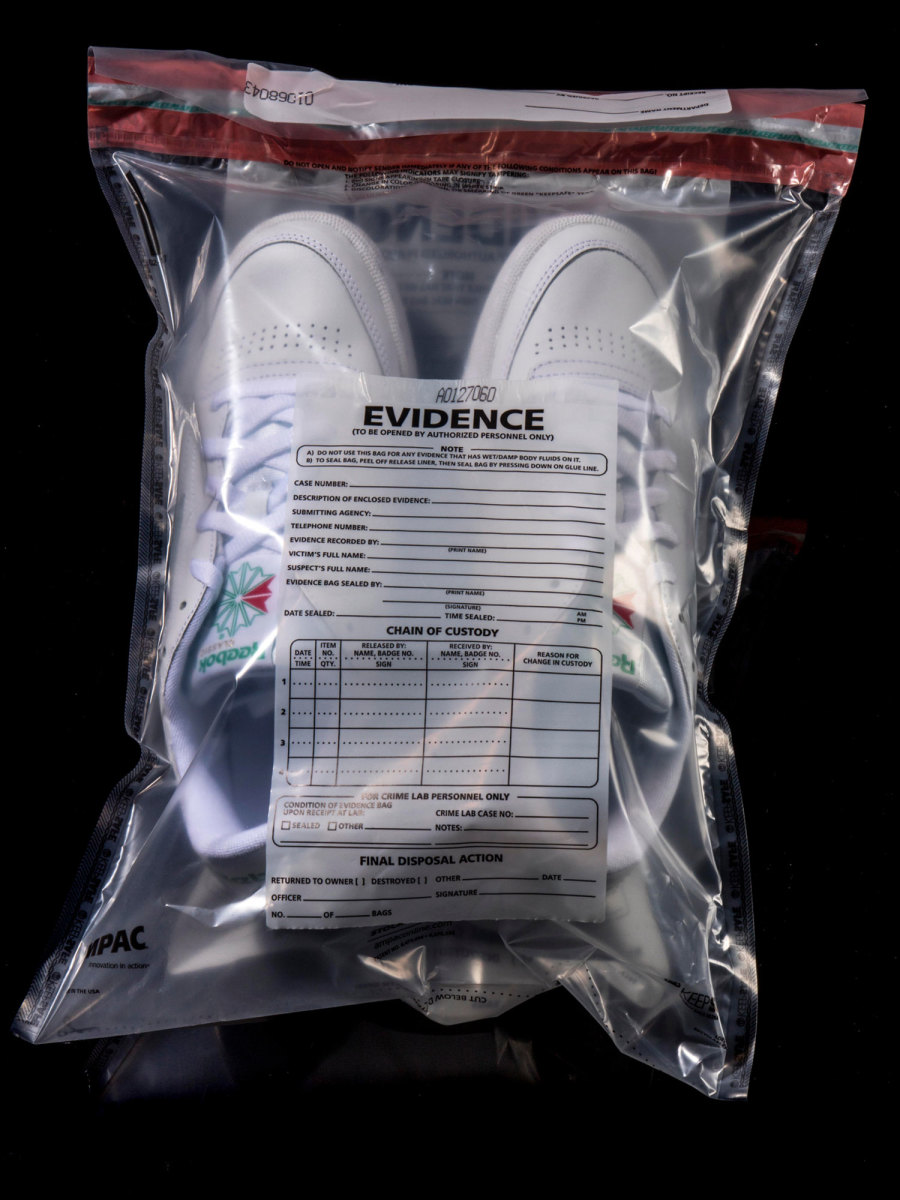
After that contentious season the Mariners shipped McLaughlin to the Twins, who cut him in spring training. He ended up back in Nuevo Laredo, which was notable for its rifeness at the time with what former A’s pitcher Bob Lacey (then with the Saltillo Saraperos) calls “wheeler-dealers”: players who worked to earn extra money on the side. Some ran guns across the border. Others worked as private security for team owners and their families. Still others got involved in facilitating shady import-export deals, trading metals, ceramics, textiles. Footwear.
McLaughlin returned to the bigs as an Angel in June 1983 and, after picking up his first win, told the Los Angeles Times, “I was labeled as someone with an attitude problem, a troublemaker. But that’s in the past. Now I’m with a great team and have the opportunity to pitch.”
That opportunity would not last long. A month after his return, the Tigers tagged McLaughlin for four runs in the first inning of a 13–11 loss. The next day he landed on the DL with a strained right elbow. The Angels assigned him to Triple A Edmonton for rehab, but McLaughlin refused to report. “They hurt my arm, they abused me, and this is what I get for busting my butt,” he told reporters. “This,” he added, “is how they deal with bad boys.”
McLaughlin returned to pitch six games for the Angels that September and was released in December. Seven months later his first wife, Guadalupe, filed for divorce, claiming in court papers that McLaughlin had repeatedly abused and taken money from her. (There are no records that Guadalupe filed criminal charges.) Two months after that he was arrested in Carlsbad, Calif., for attempting to sell 11 ounces of cocaine to an undercover cop.
McLaughlin was officially done as a big leaguer. But he had his sights on a bigger fortune.
A hillside border town nestled between sprawling nature preserves, Nogales, Ariz., in the 1980s was no ideal assignment for U.S. customs agents, who typically participated in an endless series of small-time drug busts that ultimately led nowhere. But early on a Friday afternoon in August 1989, officials at the Nogales-Mariposa Port of Entry received a call from their counterparts on the Mexican side of the border. A tractor trailer had been detained trying to enter from the U.S. with 385 cartons of sneakers destined for Guaymas, an industrial port city on the Gulf of California’s eastern shore. The boxes bore the logos of well-known brands like Fila and Vans, and they were labeled MADE IN THE UNITED STATES—but the shipment was listed as having originated from Busan, the largest port in South Korea. Their paperwork, it would turn out, was traceable to one Byron McLaughlin.
McLaughlin had settled some 400 miles to the west, in Coronado, Calif., a tony suburb on the key-shaped peninsula that juts across San Diego Bay. There he lived an unlikely life for a baseball burnout with no college degree: He drove a Mercedes-Benz 500SEL, swam in a backyard pool on a quiet side street named Bahama Bend and commuted 20 miles south—from his home across the Mexican border—to conduct business, returning at night to his French-Ivorian second wife, Simone, and young son. (Simone is not McLaughlin’s second wife’s real name, which is withheld here for the sake of privacy.) Mexico had recently joined the General Agreement on Tariffs and Trades (GATT), an international accord that limited taxes on imported foreign goods; it was supposed to make the country a more involved player in the international trade market. But it also made conditions ripe for opportunists like McLaughlin.
Harley Lewin knew all about the GATT and its effects. He’d spent the 1980s fighting not only counterfeiters but also public indifference toward their activities. Early in his career he could hardly get judges and prosecutors to pursue his cases. But then he’d collaborated with Massachusetts senator Ted Kennedy on the Trademark Counterfeiting Act of 1984, which increased restrictions and punishments for infringers. When Vans called on that August afternoon with news of an intercepted shipment of suspicious shoes at the Mexican border, Lewin knew he would have no problem persuading the feds to pursue.
"We were just a bunch of idiots who knew nothing about anything."
His investigation began quickly. Two days after the seizure in Nogales, Lewin sent an undercover PI posing as a potential shoe buyer to visit McLaughlin’s office in an industrial section of Coronado, sandwiched between San Diego and the Mexican border, and McLaughlin offered a tour of his facilities. The operation appeared legit, with a secretary and staffers and a nameplate on the door for Beck Buying Marketing Group. But inside the office the investigator spotted faxes bearing the names of trade companies and an invoice for tennis shoes from an outfit based in Busan. Tacked to the wall were fax numbers labeled MEXICO, GUAYMAS (the destination of the busted border shipment), GLENN (McLaughlin’s brother) and, cryptically, D.Y.
If these were all dots, no one on McLaughlin’s staff of six—young, inexperienced and unquestioning, paid well and in cash to carry out specific tasks without explanation of the company’s true nature—was connecting them. “We were just a bunch of idiots who knew nothing about anything,” says one former employee.
Three days after the initial visit, Lewin’s PI accompanied an informant to Mexico City, where they met a man who identified himself as overseeing a branch of McLaughlin’s business. The manager showed off four sample sneakers, which he said McLaughlin advertised by placing flyers on windshields around town. One, a white lowtop Reebok Club Champion with green trim, bore no manufacturing date or factory code on its label, and the color of the lettering in the trim did not match the lettering on the fabric, a clear giveaway of its inauthenticity. The quality of the shoe’s supposed leather was so poor that the investigator believed it might actually have been vinyl. No doubt, it was a fake.
While Lewin stockpiled his findings like ammo, McLaughlin moved his office 20 minutes southeast, to Chula Vista. The PI visited four times over the next month to search the trash, where he found faxes and memos confirming shipments, plus invoices for companies—suppliers, presumably—in Mexico, Chile and Hong Kong. In October a U.S. customs agent did his own dumpster dive and turned up airline tickets for one of McLaughlin’s employees to travel to a sports expo in Chicago (along with her event name tag) and faxes to McLaughlin from his brother listing the prices for L.A. Gear and Fila shoes. “In the sense of catching a bad guy, it was easy stuff,” says Michael Woodworth, a U.S. customs agent who worked with Lewin on the case. “You follow the papers. It was more like accounting than an investigation.”
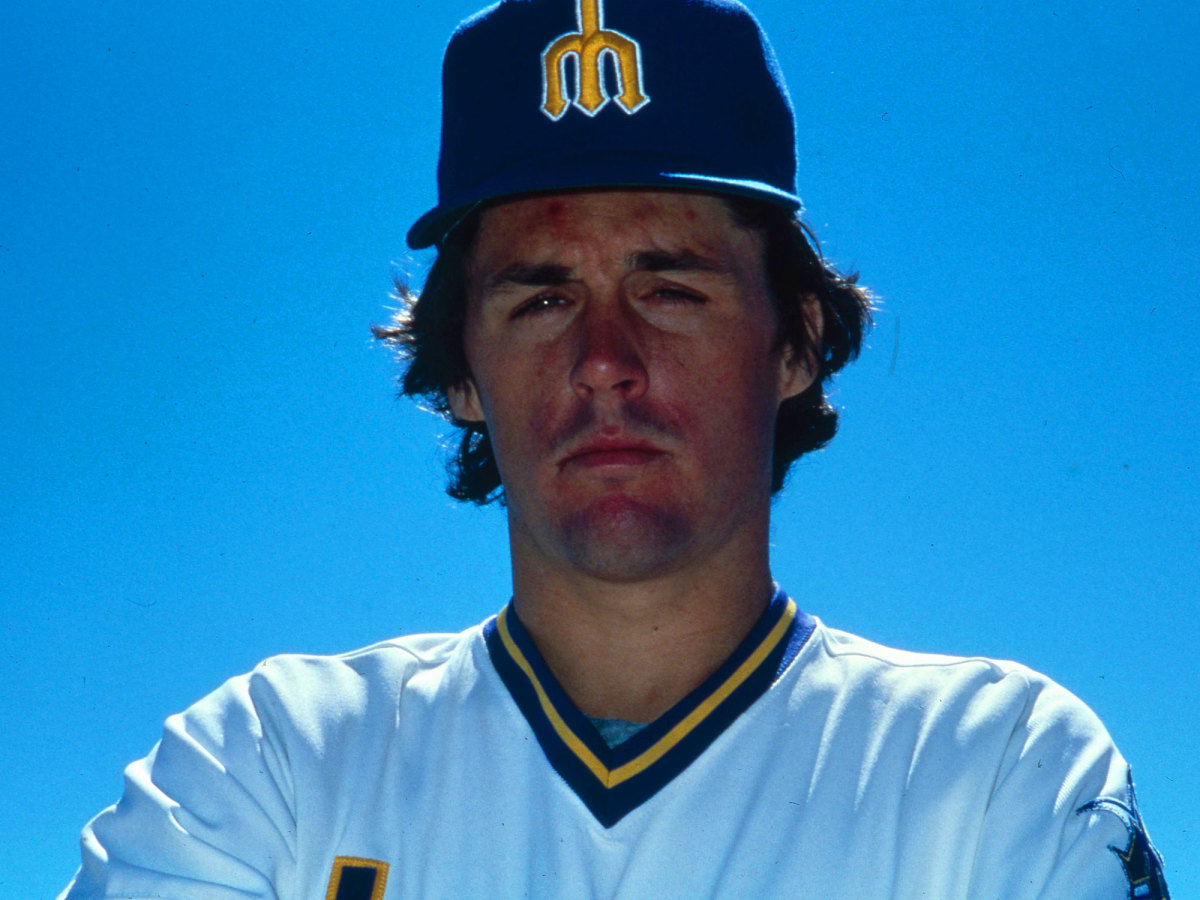
That accounting had uncovered what one U.S. attorney would later call a “worldwide conspiracy.” Heading the operation was a South Korean businessman—D.Y. from McLaughlin’s office wall. According to a federal indictment, that supplier was manufacturing imitation name-brand sneakers in Busan and shipping them to cities on Mexico’s Pacific coast. McLaughlin—who connected with D.Y. through contacts he made while pitching in the Mexican League—would pay between $8 and $11 per pair, then flip them to Mexican distributors for twice that, insisting that he be paid in U.S. traveler’s checks, which he stashed in an account with Banque Internationale à Luxembourg. (Several other American brokers were indicted for similar roles.) At his peak, McLaughlin sold some 80,000 pairs of knockoff sneakers every month—Reeboks, Converses, Nikes, Adidas, Vans. . . . Before expenses, his monthly net was in the high six figures; by the time of the investigation, his overseas bank account held approximately $2.4 million.
Ultimately, arrest warrants were issued for 18 people involved in McLaughlin’s operation. Assets were frozen and seized, including $4.5 million in cash, real estate, gold, jewelry and cars. McLaughlin’s brother, Glenn, was arrested in Miami, having been lured there from Chile—where he ran his own branch of the fake shoe network, according to court papers—by federal agents posing as prospective clients. (Glenn spent a short time in jail, according to one news report; he could not be reached for comment.) A fleet of dark, unmarked cars even rolled into the parking lot at Beck Buying Marketing Group, unleashing a swarm of agents who ordered McLaughlin’s employees to hit the ground.
Finally, late on the night of Nov. 28, 1989, Lewin accompanied a half-dozen armed police officers and U.S. customs agents to execute a warrant for Byron at his Coronado home. They rang the front doorbell; the officers’ holsters were loose, unsure what type of confrontation loomed. A groggy McLaughlin finally opened the door and took stock of his visitors.
“Oh, is there a party going on?” he asked. “Am I invited?”
The 1980s had been kind to the sneaker business as athletes (see: Air Jordan, in 1984) and pop stars (see: Run-D.M.C.’s hit “My Adidas,” in ’86) brought casual footwear into vogue. Designs grew bolder and more fashionable; brand names became style shorthand. Nike’s annual revenue surged from $270 million in ’80 to $2.23 billion a decade later.
Trouble, though, was bubbling. The fervor over footwear had stretched to Mexico, but demand was outstripping supply. Into that gap rushed a cadre of entrepreneurial types with an eye for legal gray areas. By 1990, experts estimated that a quarter of the Mexican sneaker market was in some way illegitimate—either unlicensed backdoor sales of authentic goods or altogether counterfeit shoes. And chief among those providing them was the man known across the border as Byron de Tenis.
Upon his arrest, McLaughlin disputed very few of the basic facts of his operation. Yes, he had brokered the import of the shoes in question. Yes, he had shipped them to Mexico. And yes, he was selling them there at wildly profitable margins. But what he was doing, McLaughlin and his lawyers argued, was not illegal.
The argument was two-pronged and crafty. First, McLaughlin contended, his sneakers were merely “gray market” goods, meaning they’d been manufactured by the very same factories that produced genuine Nikes and Reeboks and so on—they simply lacked the official licensing markings. (Lewin says his investigation revealed this was not the case.) Second, he offered an interpretation of the Lanham Act, a trademark law passed in 1946. Because the shoes were made outside the U.S. and sold in a foreign free market, McLaughlin’s lawyers argued, there was no U.S. law he could have broken.
“He just couldn’t get his arms around the fact that all these people were chasing him. He didn’t think he’d done anything wrong.”
In hopes of lessening any financial penalties, McLaughlin’s lawyers also presented the specious case that “only 40 cartons [from the intercepted Nogales shipment]—less than 11%—were actually determined to be seizable as counterfeit shoewear,” contending that this was “strong evidence that much of McLaughlin’s business is legitimate.” In other words: He was mostly selling real shoes, so cut him some slack.
In the end, McLaughlin was charged with violating seven sections of the U.S. Code, including trafficking in counterfeit goods, entry of goods by means of false statements and smuggling. At the same time—thanks to the provisions of the 1984 trademark law Lewin helped shape—he was slapped with a trio of civil suits from Reebok, Converse and Vans, who collectively sought $12 million in damages. Lewin and Milan D. Tesanovich, the assistant U.S. attorney working the proceedings, whipsawed McLaughlin between civil and criminal cases, one of them offering a deal while the other reneged and vice versa, to the point where the defendant grew exasperated. Why were they pursuing him when so many other people were doing the same thing? (Lewin’s reply: You got caught.) According to Lewin, McLaughlin eventually grew so flustered that he penned a letter to the U.S. Attorney’s office alleging that the only way Lewin and Tesanovich could have been cooperating so well was if they had been in a homosexual relationship. “He just couldn’t get his arms around the fact that all these people were chasing him,” Lewin says. “He didn’t think he’d done anything wrong.”
At his peak, McLaughlin sold some 80,000 pairs of knockoff sneakers every month. By the time of the investigation, his bank account held $2.4 million.
Years later, those who encountered McLaughlin remember him as a natural salesman capable of smiling and schmoozing even if he fumed and plotted internally. He typically projected the same unflinching, cool veneer with which he greeted police that night in Coronado.
But the investigation had revealed cracks in that perfect facade. Lewin was introduced to Simone and says he saw signs of domestic abuse. McLaughlin’s employees knew the violent side of their boss as well. “His face would turn so red, and the veins on the side would pop out—you’d think he was the devil,” says one staffer who recalls McLaughlin smashing and throwing phones and, in one fit of rage, knocking over shelves and breaking a fax machine.
“You had this feeling he considered the world a challenge, to see if he could get through his day without losing his temper,” says Lewin. “I’m bigger and better and smarter, and nobody’s gonna ruffle me—he always had that kind of attitude.”
By December 1990, a year after McLaughlin’s arrest but before his criminal trial began, that defiance appeared to be waning. Seeing the inevitability of his conviction—and perhaps wanting to stem the punishment—he admitted guilt in the footwear companies’ civil cases and to the federal money-laundering charges, for which he seemed certain to receive significant prison time. But that didn’t happen. The judge on the case sentenced McLaughlin to just five years’ probation and ordered that he repay $2.5 million.
A few days later Lewin’s phone rang. The voice on the other end was as familiar as it was unwelcome. “How are ya?” McLaughlin asked. “Just wanted to let you know: I’m not in the United States anymore.”
“I think, in Byron’s mind, I’m his equal. I caught him.”
It didn’t take long for an informant to offer a lead on McLaughlin’s whereabouts—France, where Simone had legal residency—but it still took months for Lewin and the prosecutors to persuade U.S. courts and State Department officials to go after McLaughlin and enforce a 14-year prison sentence that had been issued by a federal judge after he fled. Even then, French officials were reluctant to cooperate. McLaughlin’s actions, though criminal in the U.S., violated no French law. Lewin says he was told that McLaughlin was viewed abroad as a “local investor,” which Lewin took to mean he was paying people off. (Or, as Lewin says now, “The French were whores.”)
Eventually French authorities agreed to keep an eye on the target for a period of 24 to 48 hours, as Lewin remembers it, but when U.S. marshals arrived, McLaughlin had fled. They followed his trail south to Ivory Coast in West Africa (where Simone had relatives and where local authorities again had him detained), but again McLaughlin eluded them. The arriving marshals were told their man had headed east, to Ghana. There was talk of guards being bribed by a (possibly fake) Rolex.
Begrudgingly, Lewin called off the dogs. His clients were satisfied with shutting down the shoe ring that had been undercutting their profits; in its absence they almost immediately saw their Mexican sales surge as much as 30%. A global manhunt wasn’t worth the cost. U.S. law enforcement had more pressing cases to handle.
For Lewin, though, the saga was hardly over. The man he’d spent months pursuing was loose—and now McLaughlin was periodically dialing Lewin from God-knows-where, always early in the morning, at his office, on a near-weekly basis. McLaughlin chatted about the weather and inquired about Lewin’s business, lamenting the fact that his adversary couldn’t join him for dinner sometime. Looking back, Lewin feels there was more to these calls than braggadocio or conviviality, like they were driven by some twisted sense of respect. McLaughlin had grown so accustomed to outwitting others, and here was Lewin, defying his persuasion. “I think, in Byron’s mind, I’m his equal,” Lewin says. “I caught him.”
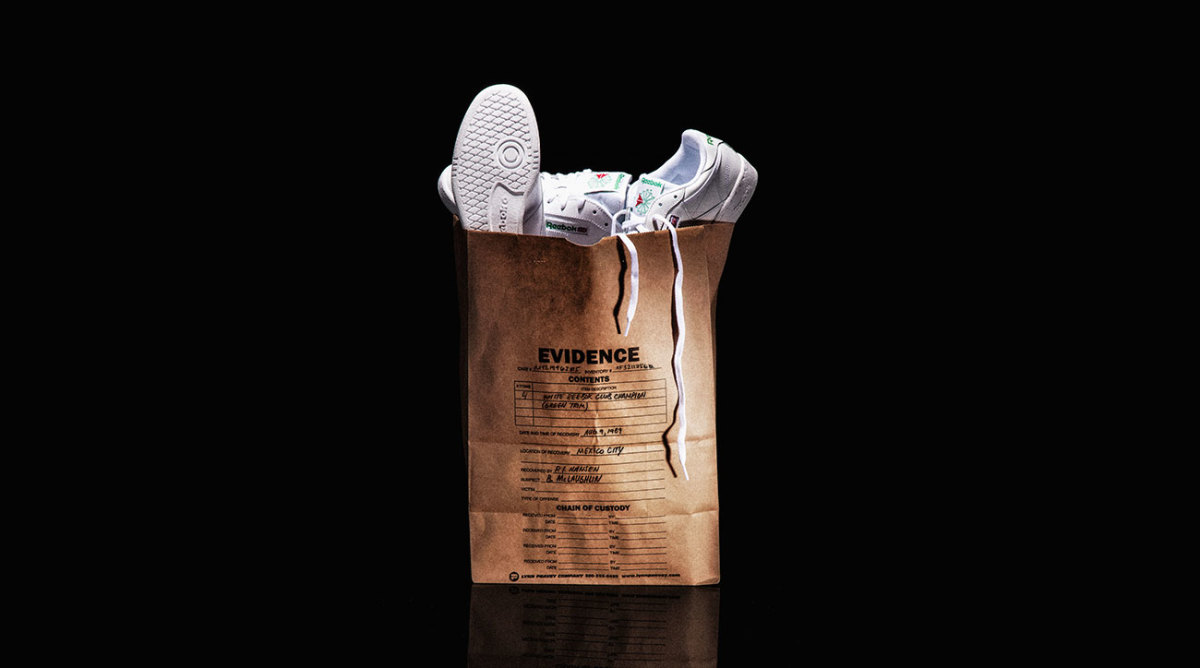
Throughout those conversations McLaughlin would occasionally mention his desire to someday return Stateside. Lewin sensed a potential deal, and on an unrelated business trip to France in the late 1990s, several years after his case closed, he finally arranged to meet his antagonist. Years had passed; Lewin hoped that time had softened his old foe’s resistance. The two men planned to rendezvous in the lobby of an upscale hotel in Paris, and on the day of the meeting Lewin found the man he’d come to know so well: bold, self-aggrandizing, uncompromising. “I have a vague remembrance of him sitting in a gilded chair,” Lewin says. “I don’t know if that’s just my imagination.”
McLaughlin proposed a dollar amount he would be willing to pay as restitution, far below those dictated by his legal settlements. Lewin told him to get serious. McLaughlin asked how he could return to the States. Lewin told him he could serve his time in prison. “He’d float and float, and dangle and dangle,” Lewin says today of that negotiation. “But when it came time to do something concrete, he just wouldn’t do it.”
After an hour of this, Lewin had enough. “This is going nowhere,” he said, standing up. And he left. He hasn’t seen McLaughlin since.
"He was the kind of guy that if he put the same talent to good use, he’d probably have made a lot more money.”
Google did not exist in 1989, and so it took a while before Lewin learned that the target of his investigation was a former major leaguer. “I looked that up and I said to myself, ‘What a jerk,’” Lewin recounts. “You don’t feel sorry for a guy like that.”
Lewin, 73 now, gazes out the window of his 27th-floor midtown-Manhattan attorney’s office. The top two buttons on his sand-colored linen shirt rest unclasped, and with his single earring he wears the look of a Key West retiree. “Most of the time when you hear about trouble with professional athletes,” he says, “it’s drugs or some sort of altercation with the police or a domestic dispute—that sort of low-level but terrifying activity. Byron was anything but that. He was confident, sanguine, smart. He was the kind of guy that if he put the same talent to good use, he’d probably have made a lot more money. But [those people] can’t help it. They’re always cutting corners, always trying to make a buck a funny way.”
Perhaps it’s that peculiar premise—major league pitcher runs international counterfeit sneaker ring—that has lent McLaughlin’s story lasting appeal. In 1996 the short-lived syndicated TV show U.S. Customs Classified devoted an episode to the saga, and writer Patrick Dubuque revived the story for The Hardball Times in 2016. Had McLaughlin’s case happened now, Dubuque points out, “Twitter would have eaten this thing up. It would have been a running gag.”
Lewin, meanwhile, will occasionally hear some whisper about the fugitive forever linked to his name. The last lead, about five years ago, placed McLaughlin in Thailand, still working in imports and exports. But none of this has brought McLaughlin any closer to justice.
“This has almost been a question of who could outlast who,” says Lewin. “In my case, I do this professionally. So when a client calls me and says, ‘I’ve had enough,’ regardless of what I may feel personally, I stop. If I hadn’t stopped? He’d [be] in jail.”
There are things that still nag at Lewin: how he and others invested so much time and so many resources in going after a target who’s still at large . . . The way McLaughlin is alleged to have treated his wife and others . . . the idea that he could be pulling the same stunts somewhere else.
“This guy is never gonna go away,” Lewin says. “Not until somebody takes him down.”
And maybe, he knows, not even then.
